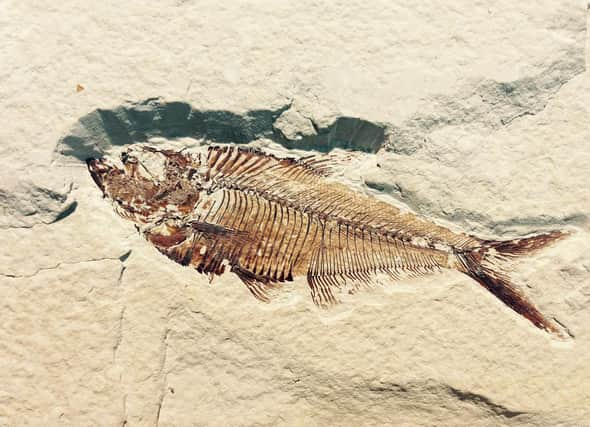Doncaster's Dean Lomax leads dig of largest dinosaur fossil in UK history


The excavation is being led by Dean Lomax, an award winning palaeontologist and author hailing from Doncaster.
The creature has been identified as an Ichthyosaur – an order of creatures that Dr Lomax specialises in. He has given scientific names to several extinct beasts over the course of his career. The Ichthyosaur is being colloquially referred to as a “sea dragon” due to its gargantuan size.
Advertisement
Hide AdAdvertisement
Hide AdThe remains of the Ichthyosaur have been discovered in Rutland Water Nature Reserve. It’s been measured at an astonishing 33ft long and is estimated to be 180 million years old, meaning it was alive during the Jurassic period. The skull itself was 6ft long and weighed a tonne, though some of this weight can be attributed to the surrounding clay.
The skeleton is very well preserved, perhaps due to it being close to a body of water. Generally, fossils preserve better in shallow pools of water, or damp locations.
Dr Lomax spoke on how it was an “honour” to take charge of the excavation and that “Britain is the birthplace of Ichthyosaurs; their fossils have been unearthed here for over 200 years.
“It is remarkable to think the Rutland Ichthyosaur is the largest skeleton ever found in the UK. It is truly an unprecedented discovery and one of greatest finds in British palaeontological history.”
Advertisement
Hide AdAdvertisement
Hide AdIchthyosaurs were one of the first prehistoric species to be discovered, with illustrations of their remains dating back as far as 1699. As such, they are one of the more comprehensively understood creatures from prehistory.
Exclusively aquatic, they were not dinosaurs – instead, they have been classed as “marine reptiles”. Ichthyosaurs were thought to exist from 250 million years ago to 90 million years ago, meaning their existence spanned the course of three different prehistoric periods (the Triassic, the Jurassic and the Cretaceous). Such longevity was rare for prehistoric orders of animals.
The creature has been identified as a Temnodontosaurus Trigonodon (Temnodontosaurus translates roughly from Greek as “cutting tooth lizard”) and is one of the largest species of Ichthyosaur currently known.